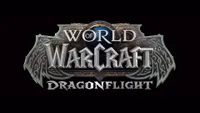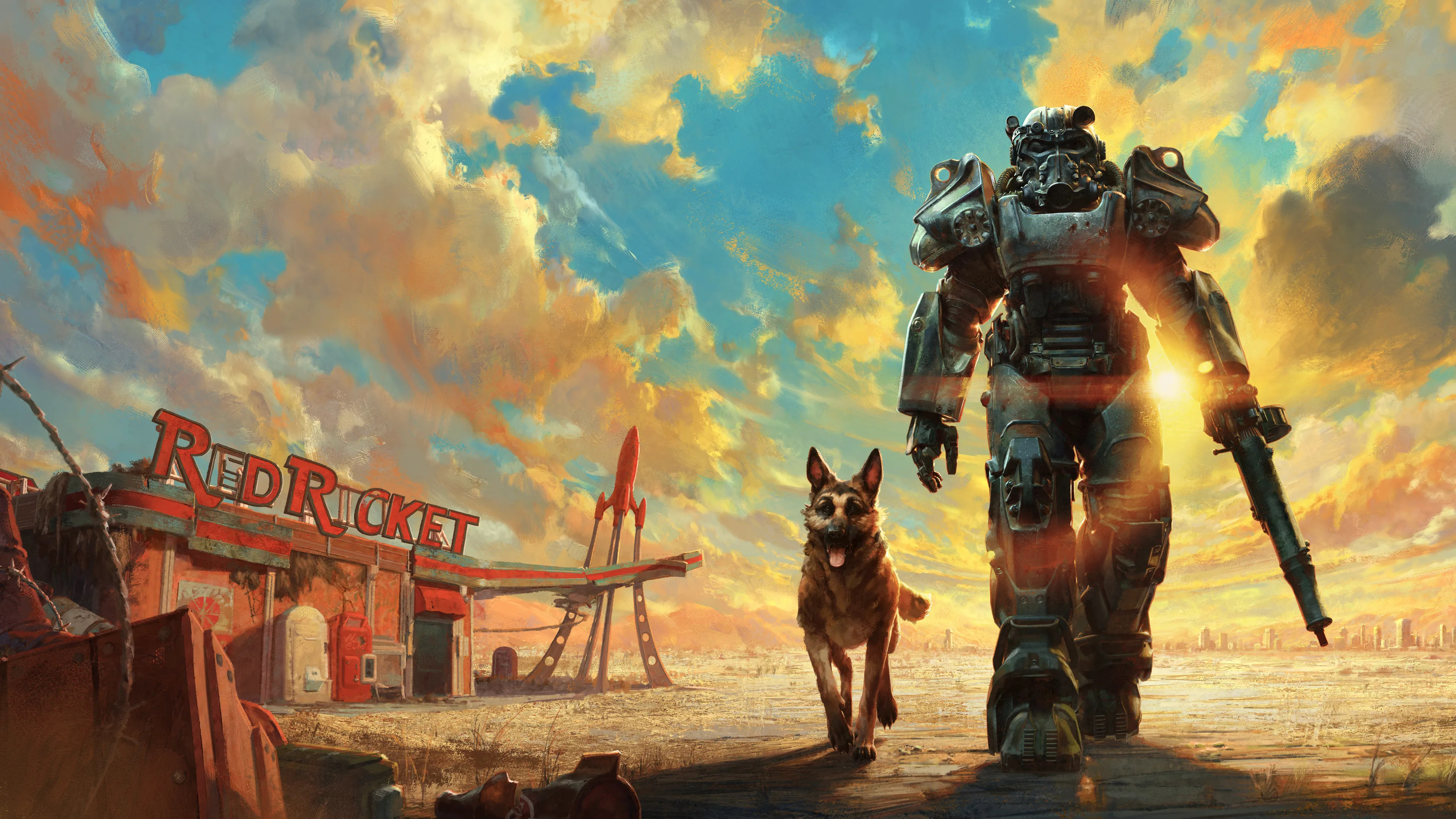World of Warcraft Dragonflight mega interview: the future of this legendary MMO
We caught up with Blizzard to learn all about World of Warcraft: Dragonflight.
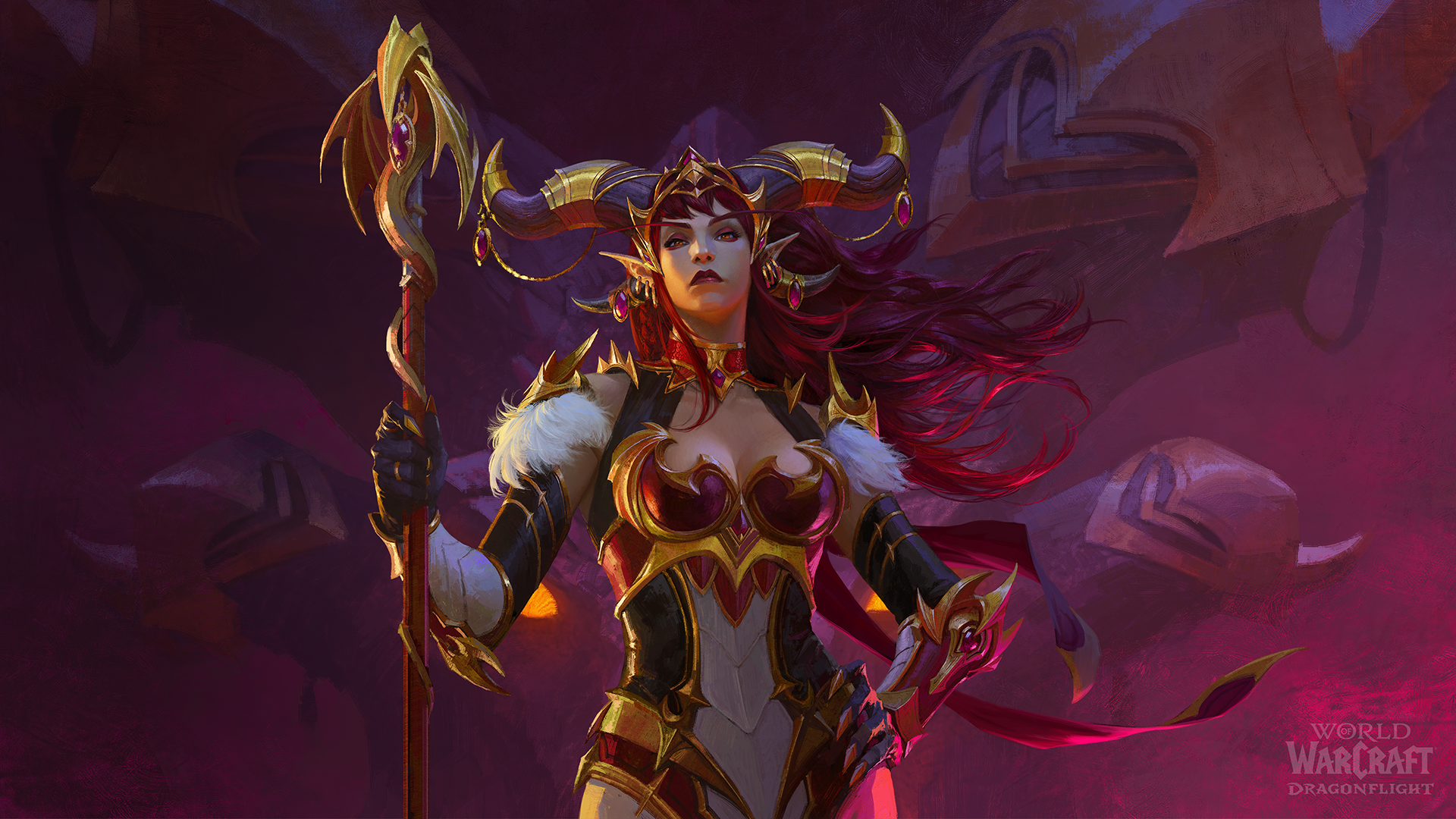
World of Warcraft is an aging giant, but the creative minds at Blizzard still plugging away figuring out how to squeeze more Azerothian goodness out of this quite legendary PC game.
Entering its 18th year in operation, World of Warcraft has defied industry trends, defied rivals, and weathered every storm internally and externally as it approaches two decades of service. The team is tasked with figuring out how to keep the game fresh for old-school players while making it attractive to lapsed and new players alike. With that in mind, the team set about building Dragonflight, the latest expansion which turns many of the PC game's existing systems upside down for a new era. Dragonflight also looks to WoW's recent successes with the revival of earlier expansions as part of its WoW: Classic initiative, which has seen players discover historic and nostalgic expansions for the first time.
Dragonflight revives WoW's classic talent tree progression paths while injecting a massive new landmass dubbed The Dragon Isles to kick off an all-new saga. Professions have been fully revamped, the UI has been totally refreshed, and new graphics options await returning players as they gear up for a new expedition.
To get a better understanding of Blizzard's headspace, we recently caught up with game director Ion Hazzikostas, associate game director Jeremy Feasel and lead software engineer May Flores Garcia, to learn more about the game's direction, and what fans can expect in this continuation of what is easily one of the best PC games of all time.
Note: Some responses have been edited for clarity and brevity. Includes questions from various outlets including LaptopMag, Polygon, MMO-Champion, and Twinfinite.
World of Warcraft Dragonflight Interview summary

- Blizzard wants to include more character customization options in the future, including for Balance Druid's moonkin forms.
- Blizzard says it hasn't shelved cosmetic glyphs, but they need to maintain a balance between customization and spell clarity.
- Class identity will be enhanced via the new talent trees and class-specific armor sets.
- Dragonflight's Renown system will not be tied to power as was the case in Shadowlands, but will still allow you to pursue meaningful rewards through a weekly covenant with specific factions.
- Blizzard is always planning two expansions ahead. The game director had a meeting about the next, next expansion after Dragonflight this past week.
- Blizzard had to refactor aspects of the game's movement engine to accommodate the new physics of Dragonriding, but maintaining that signature Warcraft responsiveness was key.
- Dragonriding will boost flying speed by over 800% at its maximum level, compared to the 180% we have today.
- The Dragon Isles has some of the biggest zones in Warcraft history, in part due to the emphasis on flight.
- Blizzard may explore other classic dungeons for full-blown revamps like Uldaman.
- Blizzard says they know they have work to do to improve the new player experience, given that the best way to get into WoW is via a friend right now.
- Xbox controller support is coming in the future, and Blizzard wants to enhance accessibility in general.
- Blizzard says death is still a scary uncertainty for most of Azeroth's citizens, despite the fact players conquered the Shadowlands. Not everyone returned from the Shadowlands excursion, and we have not yet discovered all the different afterlives the Arbiter could send us to.
- Blizzard is doubling down on creating meaningful villains that are nuanced and deep, and not necessarily simply exuding raw power.
- World of Warcraft's storyline is encrypted in the data files to prevent spoilers and leaks this time around.
- More class combinations may be on the cards for the future, such as Undead Paladins, but it may need new lore and storylines for it to make sense.
Refreshing the World of Warcraft experience
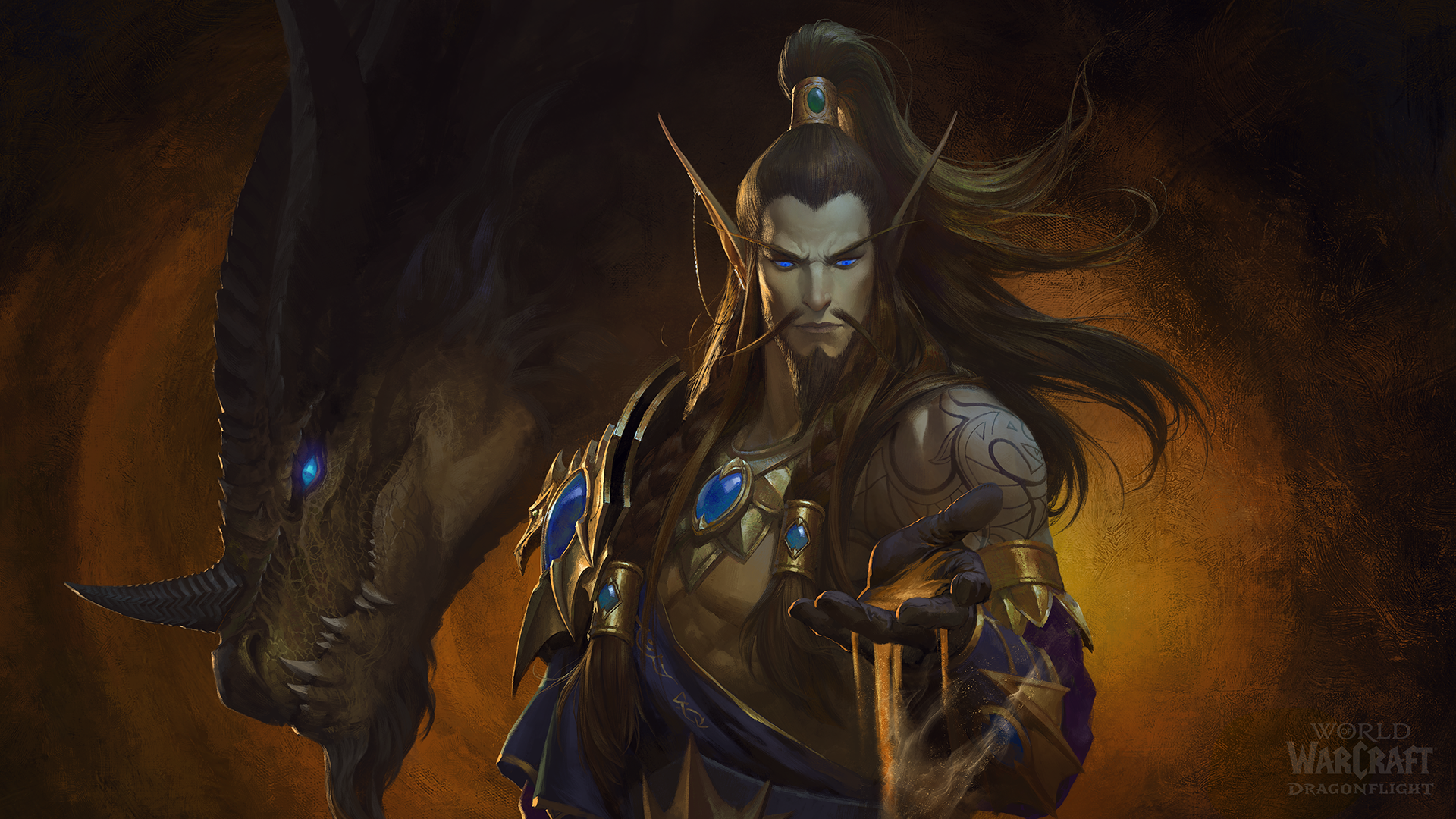
With regards to how the WoW experience has evolved in recent years, Hazzikostas discussed how World of Warcraft: Classic and Burning Crusade: Classic have both informed and shaped how the team wants to evolve the franchise. Hazzikostas went as far to admit that the restrictions Blizzard attempted to implement in Battle for Azeroth and Shadowlands went too far, and have instead settled on player freedom as the driving ethos of the game while borrowing some of the depth and complexity that typified earlier World of Warcraft experiences.
"I think we've learned a tremendous amount from Classic. The whole Classic experiment over the last few years. There's always a lot of debate on changes that have been made over the years that remove friction. In some cases, we've streamlined some things — everything from group finding tools to simplified talents to whatever else. Did we lose something by making those changes? Or is it that the community in a lot of ways is in a different place now?"
All the latest news, reviews, and guides for Windows and Xbox diehards.
"I think some of our experiments in past recent expansions, things we didn't challenge, for example, the restrictions on changing your Azerite armour around. We were harkening back to the way Classic worked 15 to 16 years ago. It had good effect back then, where you had to pay an escalating respec cost to change your talents — decisions felt weightier. In a sense, these things did create more investment in your character, and social interdependencies and so forth. But I think what we've seen looking at players go through Classic today is that the community is just in a different place. The same systems that played out one way in 2005 and 2008, don't play out the same way today. People do metagame, people do min max people, even if respeccing is super-inconvenient, people still feel obligated to grind lots of gold so they can respec whenever they want to be optimal."
"We've tried to put the genie back in the bottle, but we were a bit misguided. We were trying to return to a place where our players feel no longer really works. I think Dragonflight is fully embracing that knowledge as we look forward. It's meeting players where they are. It's giving freedom and agency. It is the depth, and the customization of old school talent trees, dialled up to 11, while retaining the flexibility the players of today want and expect. You'll have the ability to have multiple loadouts to switch between on the fly, link one to your friend, and so on. We want to let you play the game the way you want to play it. And we'll meet you there. And that's kind of the modern ethos embodied."
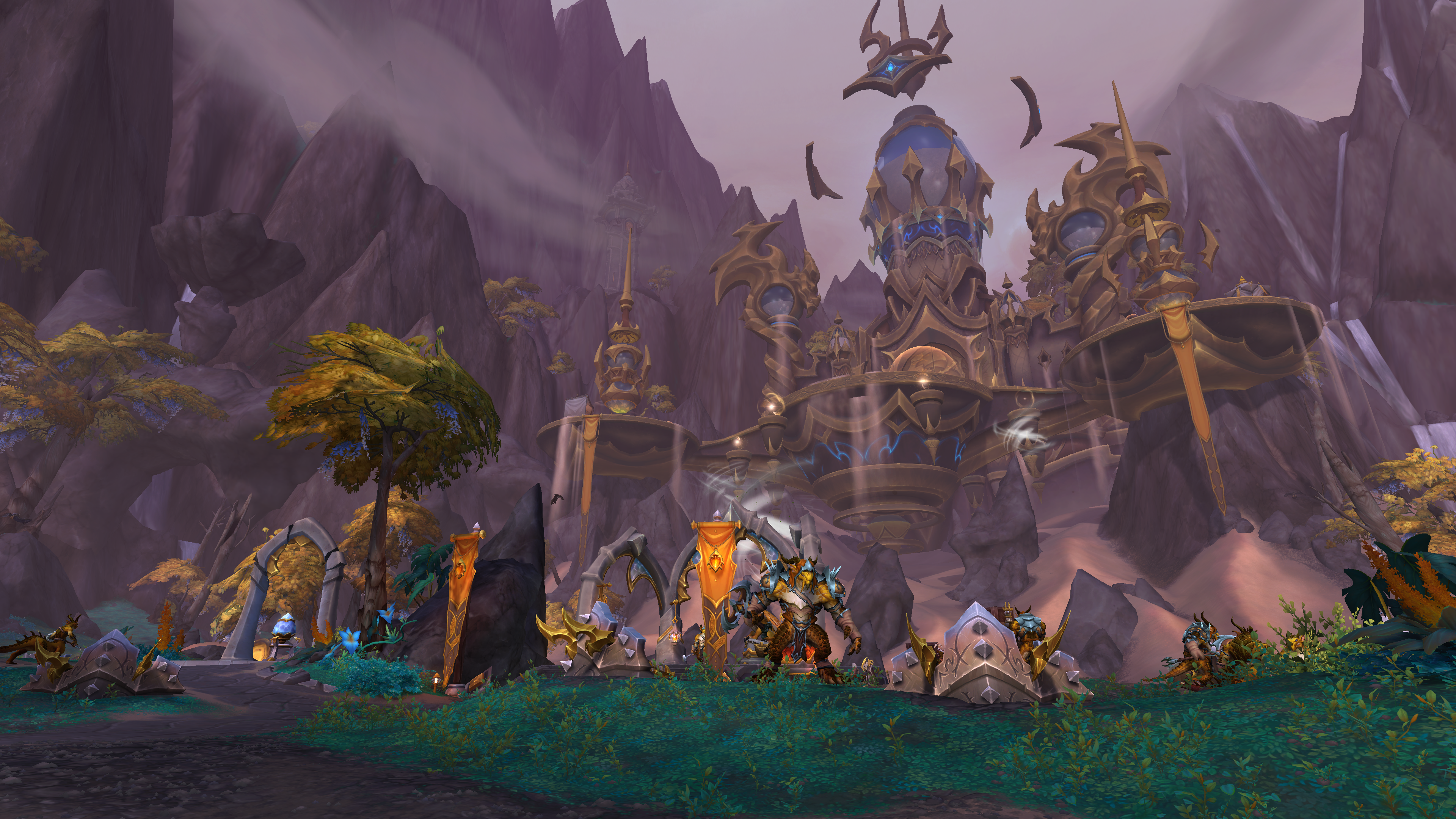
I asked Ion for his thoughts on World of Warcraft's new player experience. One of the biggest barriers I find to new WoW adoption is the general messiness that is the current WoW iteration for new players. With the new Exile's Reach starting area, you're dumped into the middle of a storyline set through years of conflict build-up, addressed as a "champion" by major characters despite being a new player. I expressed that the classic racial starting areas gave players a deeper connection to the game's setting. Ion acknowledged that there's still work to do, noting that they have "a lot more" to do to improve things.
"It's something we know we need to continue to evolve, like Exile's Reach. I do think Exiler's Reach was a big step up from what we had before where you were jumping in and playing 12-year-old content that was very disconnected. It wasn't really acknowledging the evolution of the game systems or anything along those lines.
There are trade-offs for sure, between having a single unified experience like Exile's Reach, and the individual racial starting experiences we had back in the day, which is why we keep them available for people. But also, the game has grown so much, there's a lot of value in having a single environment where we can teach people the basics: this is how you interact. This is how you accept quests, and so on.
After you emerge from Exile's Reach, handing players off into Battle for Azeroth, at least continues a cohesive story arc. But we think we have a lot more to do there in terms of explaining systems. Everything from the new talents, to professions to dungeons, battlegrounds, and everything else.
Right now the best way to experience World of Warcraft for the first time is probably to have a friend introduce you to who can answer your question. But we know tons of new people check out WoW every day. And we need to continue to want to continue expanding our audience and making sure that it's welcoming for new generations."
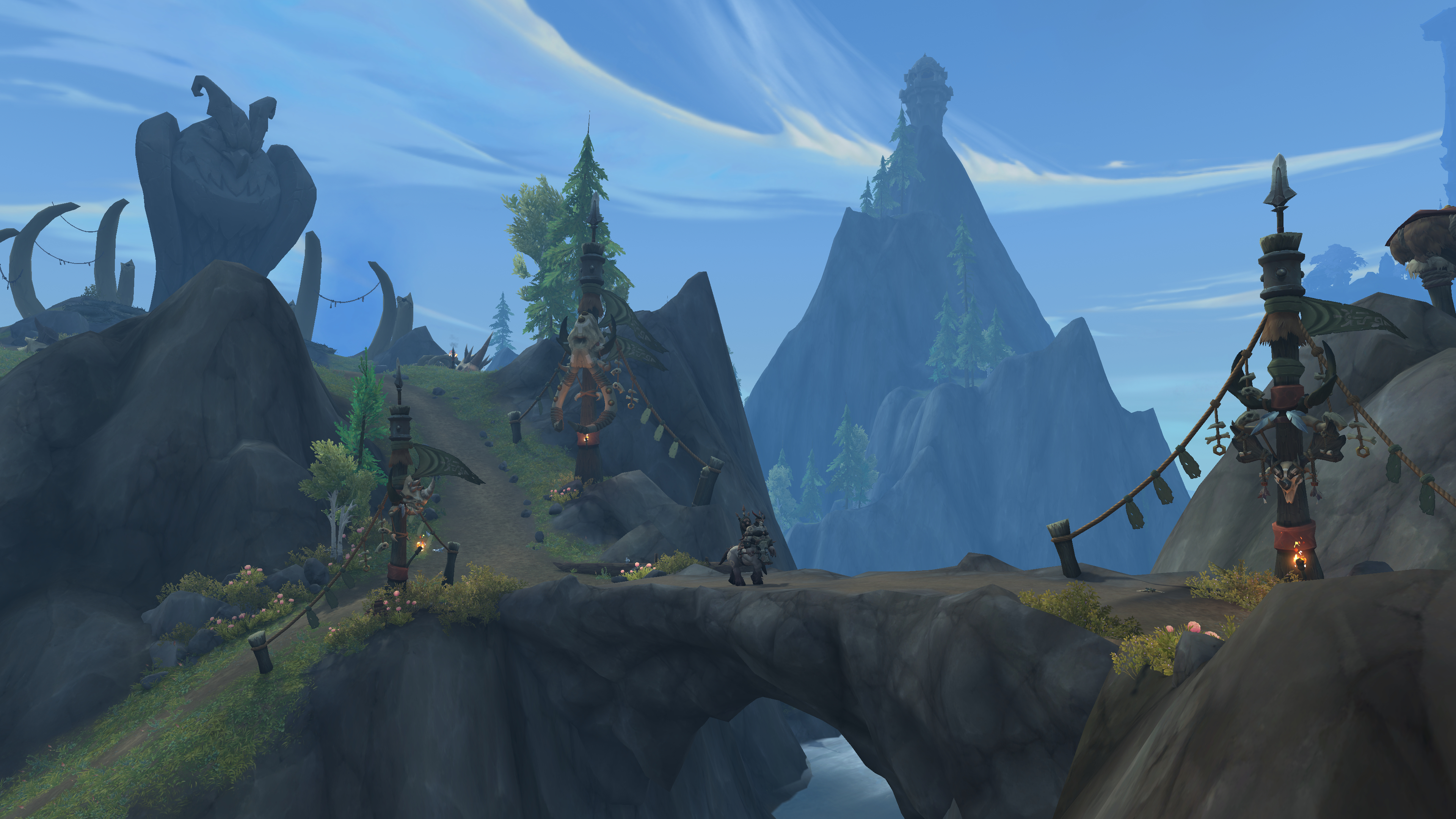
On the topic of developmental timelines, Ion noted that Blizzard generally thinks two expansions into the future. Blizzard has been discussing revamping talents to a more "classic" style for several years, but the pipeline didn't line up until Dragonflight.
"I can tell you right now, we had a meeting last week brainstorming the expansion that's going to come after the next one. We're thinking up to two expansions into the future. There are multiple levels to that timeline. In terms of big world building, we ask, where's the story going? We wouldn't have been able to plant the seeds for the story in Legion all the way back in Mists if we were just working in real time. We're always looking at short distance ahead.
The talent system overhaul is something we've been talking about internally for like three or four years. We weren't happy with the lack of extensibility, and what we lost in terms of that feeling of getting a point every level, the granularity. But we looked at what an undertaking it would be to change all of it. There was no way to get that done in time for Shadowlands. So we said, "okay, that's gonna happen for Dragonflight."
There isn't like one time where all of these things begin simultaneously. It's figuring out early concept art for where we might want to go. And then a few months later, a couple of major systems or feature ideas come into place. And then building the quests, building the raids. That's that stuff usually happening in the last year and a half leading up to launch. Pre-planning is always ongoing."
Dragonriding, questing, and zone design
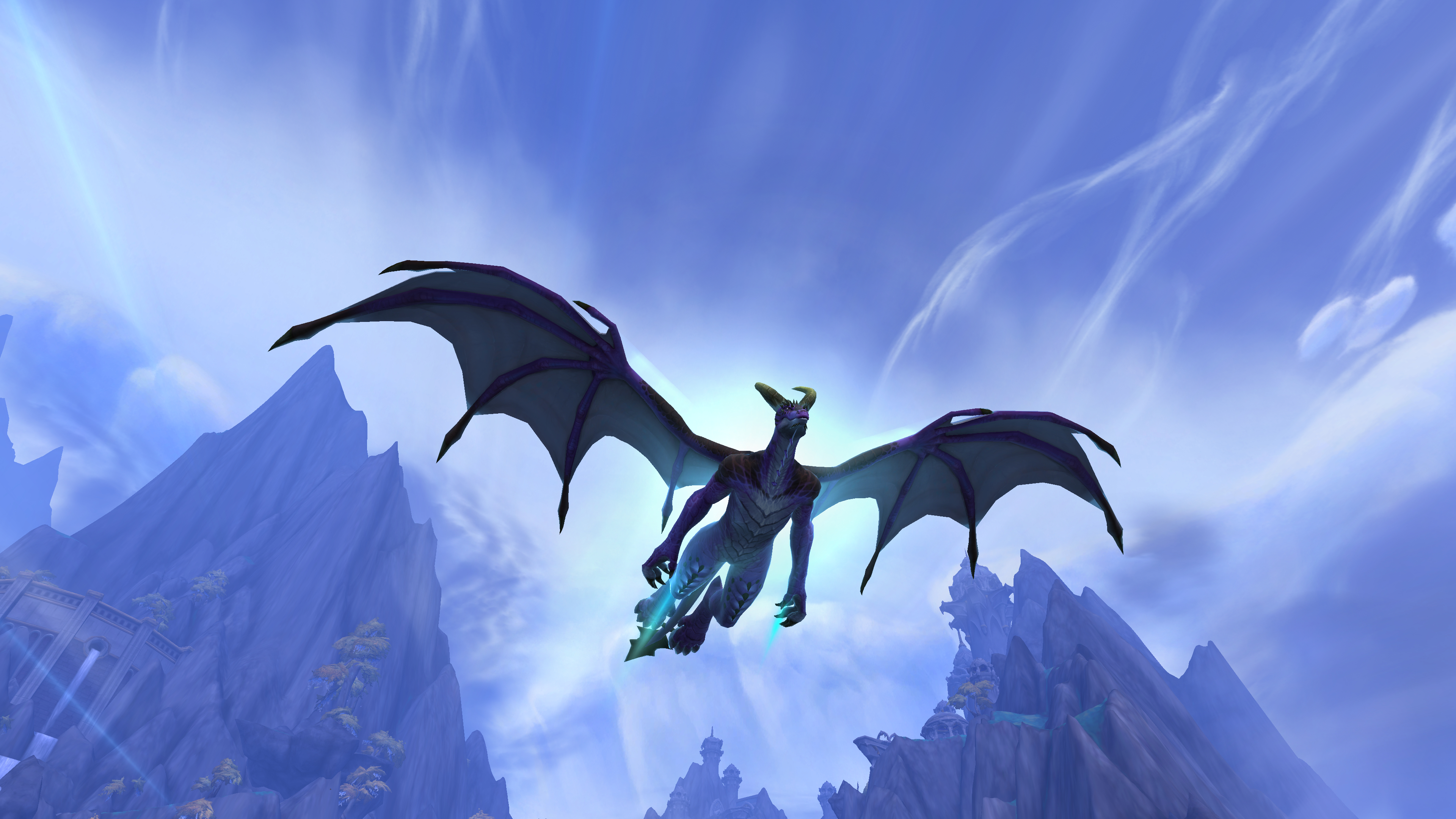
On the topic of Dragonriding and Blizzard's approach to zone design, Hazzikostas described the team's intent to inject a "breath of fresh" air into proceedings, emphasizing that the Dragon Isles represents some of the largest playable zones in franchise history.
"We wanted this whole continent expansion to feel like a breath of fresh air. Returning to Azeroth, with the world laid out before you to explore. We have made, consciously, some of our largest zones ever in World of Warcraft, with the intent and the knowledge the players are going to have access to Dragonriding from very early on in that experience."
Hazzikostas described how Blizzard deliberately guns to add in wildlife and random spawns to give the world a sense of life beyond the game's cities and "functional" spaces.
"The real world isn't simply functional spaces right next to each other. It is sometimes just soaring across open planes, centaurs galloping below you as you're heading to your destination. And our environment and world-building team just killed it. It's been awesome. I can't wait for the whole world to be able to jump in and see it for themselves."
May Flores Garcia went on to describe how the team approached Dragonriding and its momentum physics without rebuilding WoW's entire movement system. One of World of Warcraft's most signature features is the responsiveness of its movement in an online space.
"When the movement system was first created, it was definitely not created with Dragonriding physics and math in mind. So when I first started prototyping, we asked, "can we get some kind of physics into our system?" It was clear from the beginning that the typical way of implementing these physics wouldn't work in WoW. We needed to get a little bit creative into how we were going to implement that. So
One of the strengths of our movement system is our responsiveness, and in order for us to achieve that, we need to implement the math in a very specific way. So, it was hard to figure out how to get that math with the new physics that we have in mind. In the end, we actually got a lot of this physics into play, which by the way, are actually real physics. We did have to get a few changes into our movement system here and there to be able to support it properly. We were very careful, though, about not changing the feel and cultural factors in the base movement system that would ultimately compromise the actual feeling and responsiveness overall."
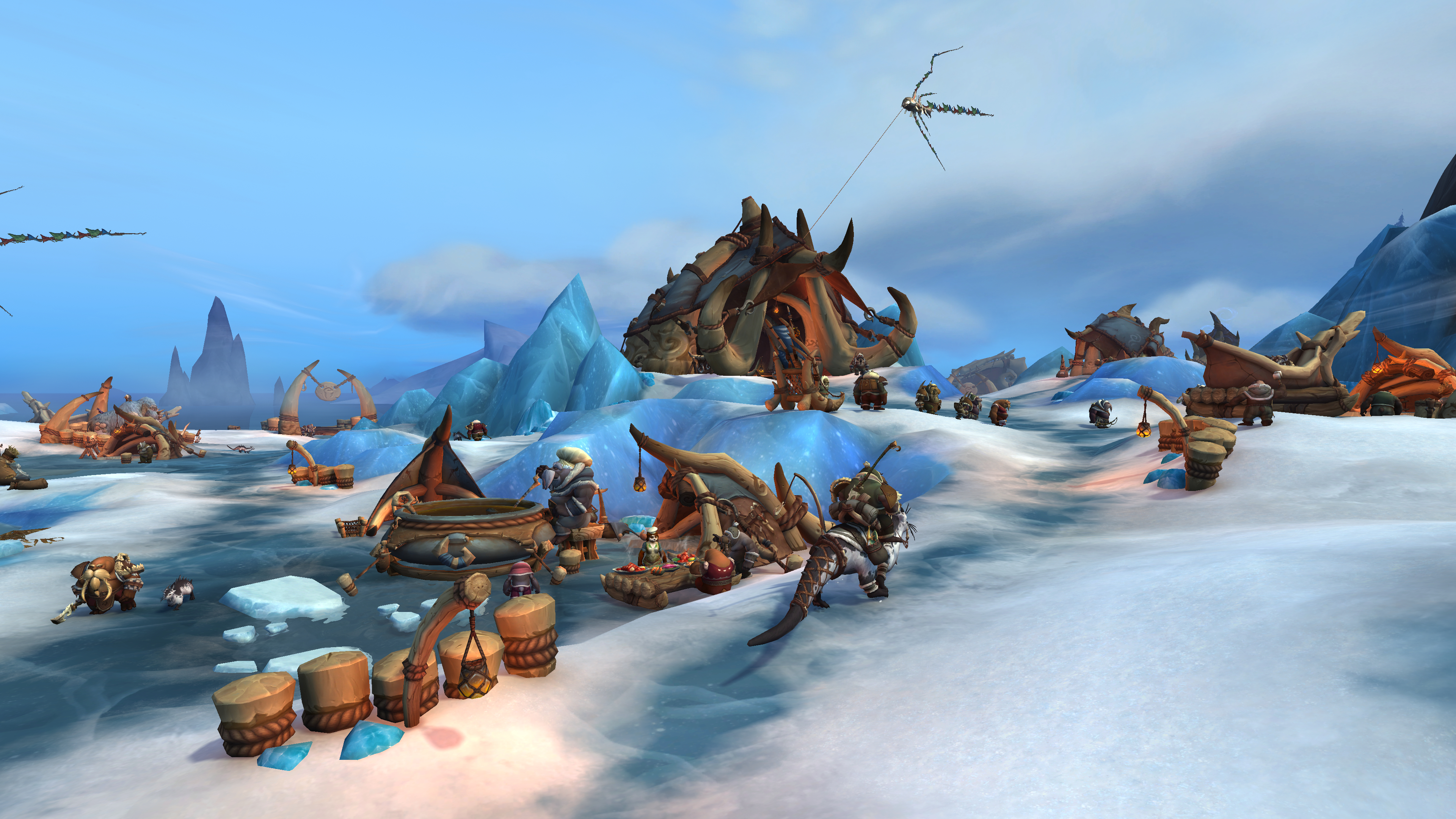
The topic of story gating came up, given its controversy in Shadowlands. Throughout Shadowlands, Blizzard implemented a soft "battle pass"-like structure called Renown around content gating, artificially preventing players from progressing the story until certain periods of time had passed. Dragonflight will use a similar system, but it won't be tied to power progression as we saw in Shadowlands. Renown will be faction-based as it was in Shadowlands, except now, you'll be able to progress any faction you like on a week-by-week basis, instead of being hard-locked to a Covenant as was the case at the start of Shadowlands.
"So there are a number of different quest lines that are going to unlock as you progress into maximum renown and I think one of the most interesting things about our particular end-game system is that everything in that world is encrypted — it hasn't even been played on the beta. We're looking forward to seeing how people react to this sort of, in-the-moment storytelling. You get to watch the next episode as it happens.
We tried to center rewards around a weekly cadence this time, so you can sort of play how you want during the week. You can pick which one of those Renown tracks you want to increase during the week, you can progress in each one of them your own pace. And then as you progress each of those tracks, you're going to unlock progression speed-ups for your alts. You unlock things like dragon racing, and dragon-riding powers. There was a lot of learnings from the Shadowlands Covenants, making them significantly more alt friendly coming out of the gate with Dragonflight."
Story and Lore
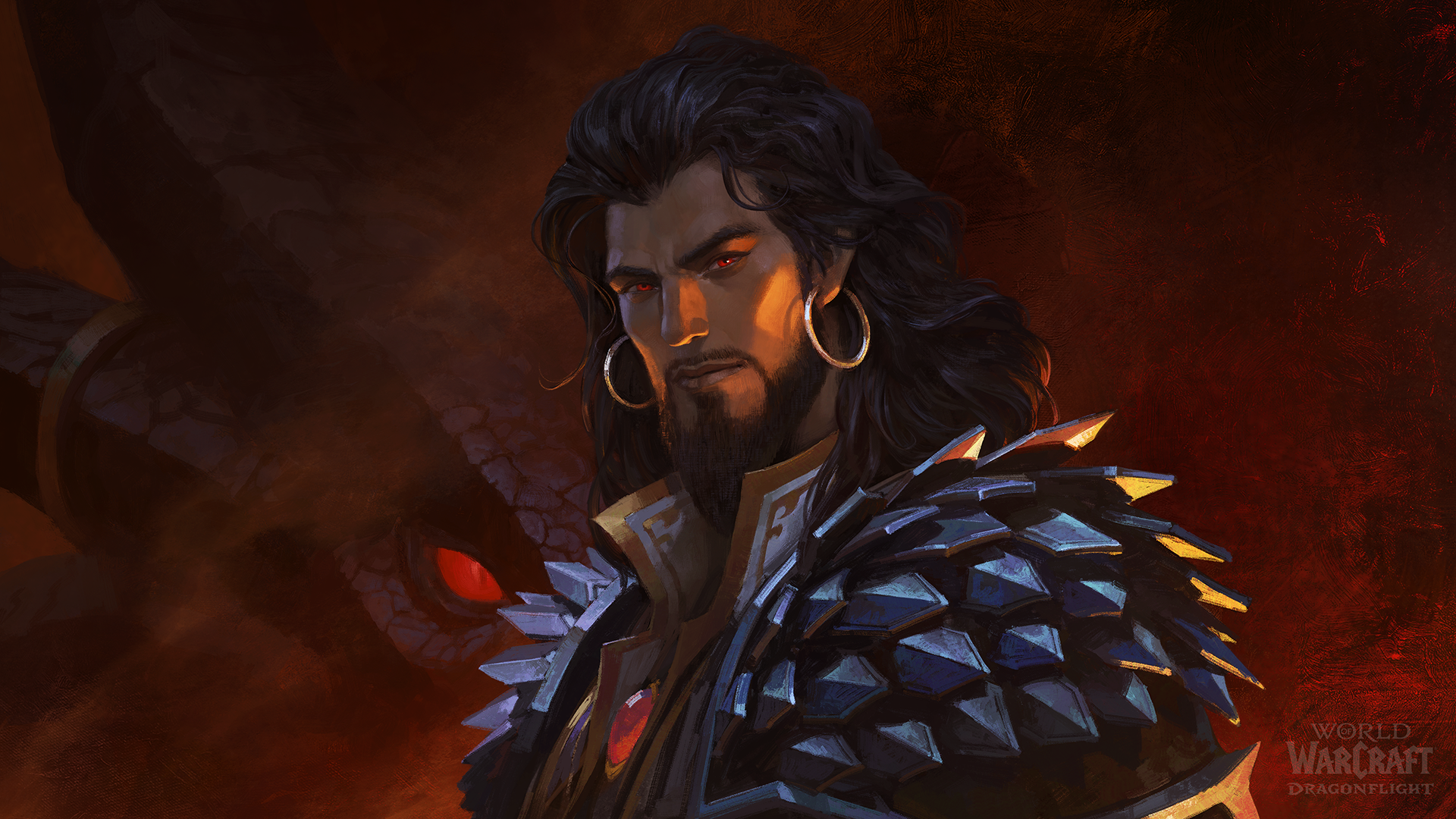
One interviewer expressed concern that new players might find themselves a little lost in Dragonflight, given that the Dragon Aspects haven't taken center stage in the WoW storyline for quite some time. Ion emphasized that Dragonflight will have depth for lore fans but will remain accessible for newcomers.
"Our hope is no. There's a lot of depth to the story, and players who played through Wrath through Cataclysm who know the nuances of the Aspects may appreciate the extra depth there. But at its core, this is a story that doesn't have barriers to entry.
It's about these dragons who are guardians of Azeroth, and the Legacy cinematics we put out on YouTube will also be available in-game for added backstory and context. The Aspects had to sacrifice their power to defeat Deathwing, the betrayer among them, and save Azeroth years ago. And so, when this ancient threat, the primal incarnates return, they no longer have the power that they once did to stand up to them. And it took everything they had to imprison and defeat the primals, previously. Without that power, they need our help. We're going to learn about the origins of the aspects, we're going to learn about what losing that power has meant, where it came from, how they've interacted with each other, all together as we journey through the Dragon Isles. We may even look to crown new Aspects in some cases to replace those that have been lost over the years."
In Shadowlands, players essentially uncover the full breadth of the laws governing life and death, complete with a full understanding of how the afterlife itself works. I asked if that potentially impacts the gravitas that plot mechanics like death could have on the story, given the fact the afterlife is now just something we can teleport into.
"There are a couple of interesting conversations that occur around the world that you could find that elaborate on this. But I think the TL;DR there is that death to the majority of the citizens, is still a big uncertainty. Everybody didn't come into the Shadowlands with us and we haven't found every afterlife necessarily. There's still also an aspect of being judged by the Arbiter, still. And you can still be placed in a place like Revendreth, where your pride is ultimately pulled out of you. There are still other afterlives that we're not sure about. So there's still quite a bit of uncertainty there. And if I was like a random person in Goldshire, I think I would still be terrified about the idea of an unknown that some people came back from — but not everybody. So I would probably still be freaked out."
It was also asked how Blizzard could avoid "Dragon Ball Z syndrome" or power creep in the story. Given the fact the game is pushing 20 in a couple of years, players have fought against increasingly powerful entities, going from angry gnolls in Goldshire fields all the way up to cosmic Gods in literal outer space. How can Blizzard keep players invested in the more grounded storylines, that seem to be what Dragonflight wants to tell? Jeremy Feasel emphasized that the most interesting villains are not necessarily the most powerful.
"I think the interesting villains and most interesting characters general, aren't necessarily the most powerful. A big driving force of World of Warcraft is crafting interesting villains and giving them nuance. I don't think Arthas was interesting, because he was powerful. He was interesting because he went through a really meaningful character transformation, and he became a tragic hero. Same thing with Illidan.
The fun part about crafting future elements, crafting everything from the Tuskarr that you meet by the side of the road, to major villains, like the headlining villain of this expansion, the Primal Incarnates. We have only briefly heard of them, and you may have seen a slight wince from Alexstrasza during a cinematic when she heard their name. We're starting to build up those characters as themselves. We can have them make interesting choices, which I think can be more satisfying than a desire to straight up destroy the world. So it'll be interesting to see what the future of the dragonflights is, once all is said and done."
Endgame and PvE
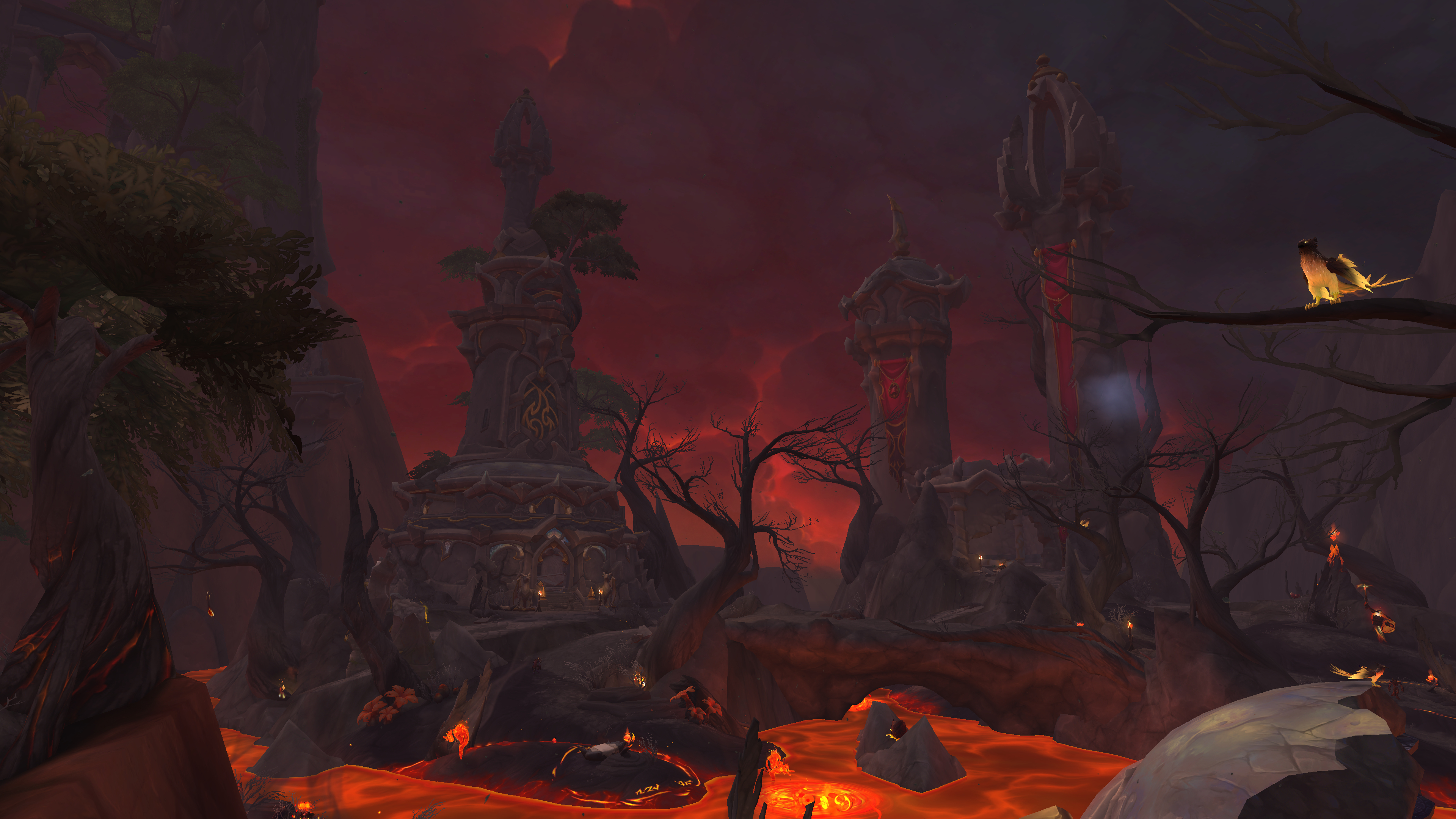
During the last raid tier of Shadowlands, there was some controversy about the difficulty tuning. The Sepulcher of the First Ones saw raid guilds burning themselves out on some of the most difficult high-end content yet, with the esports-like global race to first kill becoming notoriously grueling. Blizzard took a fair while to address some of the raid's bugs and balance problems, leading to one interviewer inquiring about whether we may see similar problems given that Dragonflight's first raid tier is dropping around Christmas.
"It's a ton of effort that goes into creating and balancing raids. We are taking more of a step back from trying to continually one-up the increasingly skillful and organized best guilds in the world. If we keep trying to one-up them, we're going to create something that will be very hard for them, but it's now actually so hard that it's frustrating for everybody else. And that's not the right thing for the game.
With the first two Incarnate bosses coming in December, we are releasing Mythic difficulty at the same time as Heroic, in large part because of the holiday season coming up. Players don't want to have to organize, you know, competitive cutting-edge ratings over the holidays. Also, it's nice for us to be able to spend time with our families as well and not have to worry about hotfixes on Christmas Day. But all of that said, I am hopeful that if this experiment works well, it's something we would continue.
It's always been a little bit odd to have that first week where Mythic raid difficulty wasn't available. As a result, loot from some sources was arbitrarily gated. It didn't matter if you cleared a high-level Mythic plus, your rewards would stop increasing past a Mythic+8 or something, that kind of felt broken. If a player asked "Wait, why am I not getting rewards for doing a really hard dungeon right now?" The answer was like, "oh, because we want to be fair to the world-first raiders." That's not a satisfying answer. So I think that releasing everything simultaneously, will make for an overall more concise, more exciting, focused stretch at the very, very high end in terms of competition, and for the rest of the player base.
So obviously, we're going to be paying close attention to how it goes. We've tested all the encounters thoroughly and gotten feedback over the course of multiple rounds on beta. One last quick point. Something else that it does from a tuning perspective: we saw the very top guilds doing lots of split runs through the first week, doing as much as they possibly can, often funneling loot, achieving item levels that exceed what regular Mythic guilds would be able to get even six weeks later. So they're not just out skilling the rest of the world, they're also out gearing the rest of the world, which makes it exceedingly hard to tune things to be interesting for them.
I think we can create challenges that will challenge the top guilds during the first week, while still being appropriate for the majority of players charting their own course, without us having to go in and do a lot of heavy-handed nerfs."
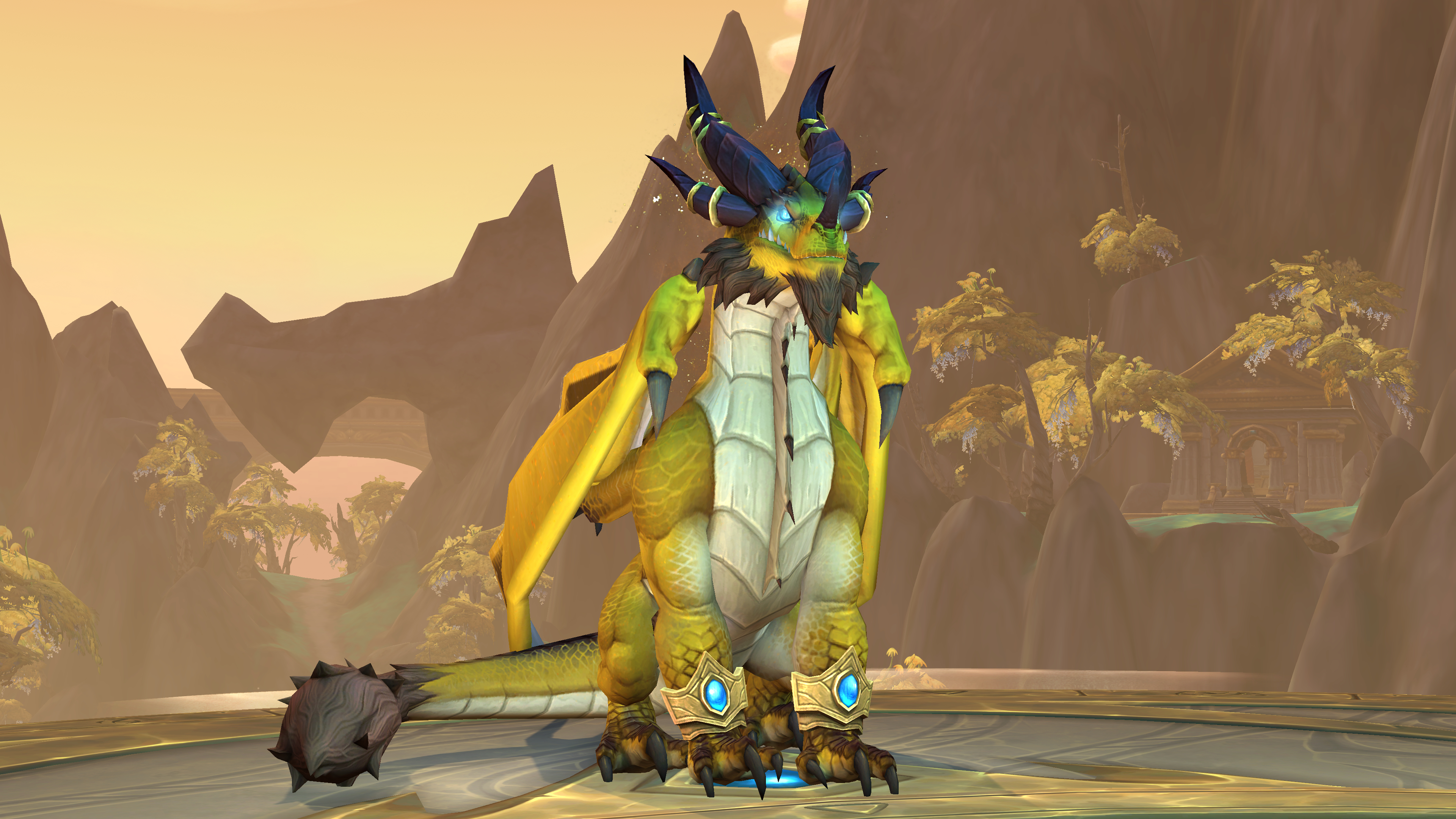
One interviewer asked if World of Warcraft will ever get a commendation system similar to Overwatch, in attempts to combat toxicity across PvP and PvE. It's certainly true that as World of Warcraft has gotten easier, it has also gotten more anonymous, meaning that increasingly players don't recognize others as actual human entities.
"It's something we spent a lot of time talking about. I think there's definitely value to commendation systems. We watched and learned from what the Overwatch team tried there with their end of match commendations. We need to be careful, whether it's penalties or rewards to make sure that we're encouraging genuine, earnestly good play and not yet another layer that's going to be metagamed. But I think carrots on a stick work.
We've tried to have a code of conduct asking players to adapt to and acknowledge. We have improved our in-game reporting and enforcement of harassment, hate speech, harmful language, and benefiting from machine learning and other tools as well.
We have the ability to police that toxicity. But at the end of the day, getting the person who was toxic towards you suspended, doesn't make that toxicity feel less bad. We want to do more to encourage positive cooperative play. We have nothing to announce specifically right now, but I think something like those positive commendation systems, reasons to care about other's opinions, even if you know, you're probably never going see those people again. We want to continue exploring those areas."
On the topic of bringing forward older raids and dungeons for current content and Mythic+ dungeon systems, Ion expressed an interest in doing so, referring to the recently re-imagined upgrade to Uldaman. Uldaman is one of the game's oldest dungeons, and it has just undergone another revamp to bring it up to date with the game's current story timeline.
Dragonflight will include older dungeons in PvE seasons on a rotational basis, but there's a point where some of the game's older dungeons are simply too old.
"I think that when we get to dungeons that are from that era, we're more likely to do what we've done with dungeons like Uldaman in Dragonflight, where it's like a full reimagining. We've done similar things for Scarlet Monastery and others in the past. We've kind of internally probably drawn a line around Mists of Pandaria, when it comes to how far back we're going to look for Mythic+ rotating seasonal dungeons. In part because like, there's something a bit more modern about the about the encounter design after that point. If we look earlier than that, I think both from an art fidelity perspective, but also just the encounter designs for the dungeon, we weren't necessarily asking ourselves the same questions that we asked when making dungeons today. And so, I would say it's unlikely in their current forms, though, as always, anything is possible."
Allied races, player fantasy, and customization
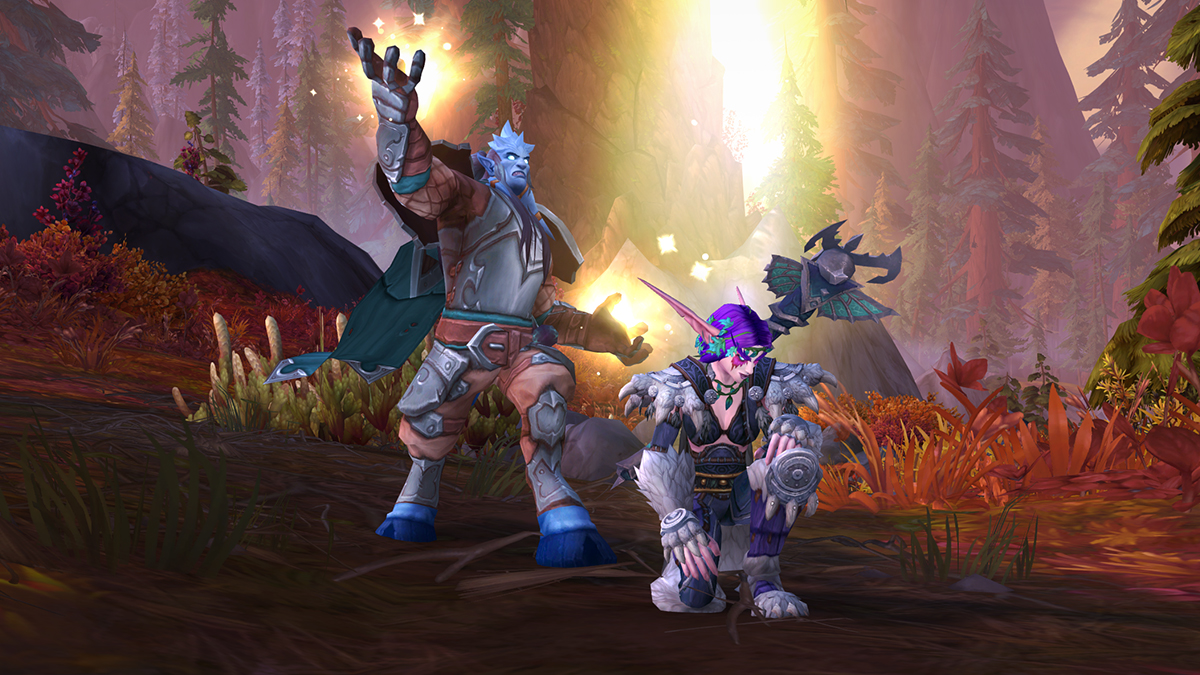
When asked about adding more races to World of Warcraft, Ion Hazzikostas emphasized that it's a tool they feel they can use when the time is right, although there are no immediate plans.
"It's a tool that we have in our toolkit. Allied races were a central part of the story and of the Battle for Azeroth expansion. Gathering allies to fight the Great War. Shadowlands just wasn't a natural fit for new allied races for a few reasons. It was very hard to imagine any of the native inhabitants of the afterlife deciding I'm going to come back to Azeroth and join the Alliance or whatever. But it's something that we are open to doing again. We want to continue to add, not just big major new races as in Dracthyr, but also variants of existing races and the other cultures we interact with, as Azeroth continues to expand."
Another interviewer asked about World of Warcraft's attention towards player fantasy. In previous expansions like World of Warcraft: Legion, Blizzard put a large emphasis on class identity with unique stories for each and every class. That has fallen by the wayside since, making some of us wonder what, if anything, they are doing to keep up with that design goal.
"I think I think the changes we made in Legion are ones that we've carried forward in terms of last class identity of spec identity. Of real depth and differentiation between a Fire Mage and an Arcane Mage, for example, in terms of their abilities, to the visuals involved, to just how they move around, and what tools they bring to a battle to help reinforce like, "this is who you are."
"Your class is the lens through which you view the world. This is how you interact with everything around you. One of our goals with the new the talent system was to deepen that connection further, to give people the tools to choose what sort of Affliction Warlock you want to be, for example. Unlike the original talent system we had 15 years ago, we now have not only a class tree, but also a unique spec tree that you only have access to as an Affliction Warlock or whatever else. That helps further set you apart from other specs. We continue to evolve and invest in improving the visual effects, we want them to feel iconic and distinctive. And that's certainly front and centre and the Dracthyr Evoker. The tools they bring into an encounter are unmistakable. You'll know you're fighting alongside a dragon and that's awesome. We want it to feel awesome for them and for the people who were there with them."
With class customization in mind, I asked about World of Warcraft's glyph system for customization. Minor glyphs were a way for players to customize the visual style of their spells, but Blizzard rarely adds new ones. Ion also let us know that grey and white items are still on the list of things to come to transmog for equipment. I asked if Blizzard had changed its ethos towards player customization, given that visual glyphs are largely dead as a customization feature.
"There are dozens of different playstyles within World of Warcraft, dozens of facets to this audience that shares their time together in Azeroth. We're always trying to balance the overall player experience, the needs of some groups versus the needs of others. Transmog is a game defining feature for millions of players. Those are all areas that we care deeply about want to continue to expand our offerings within. Improved character customization options are an example, opening up transmog options, adding all new types of cosmetics and outfits that will come from a range of end game sources. Just as a nice update, we talked about wanting to make white and grey gear transmoggable. We'd hoped to do that by Dragonflight, we realised that it was a bit more complex than expected because of the way the transmog system was built. So, there are some technical challenges to solve there, but in an upcoming patch shortly after Dragonflight comes out, you want to let all those range of white and grey items be transmoggable, which will allow for roleplayers to access a ton of new civilian looks.
Similarly with glyphs, it's a question of where we're where we're focusing our efforts in terms of professions. This time around, we wanted to overhaul the fundamental system underpinning how all professions work. And that kind of took up all of our bandwidth. There's a pendulum that swings back and forth, we want to make sure that everyone feels heard. But we can't get to everyone simultaneously.
Offering alternate visuals for player rotational abilities is something that I know our VFX team is excited to do. It's a challenge, given that we need to preserve some amount of readability and recognizability. Not just in PvP, but even in a dungeon in a raid. When you see abilities being used around you, you need to understand what classes are using them, and that you know what they are. The more variants we allow, the more we just kind of risk everything being just this mess of colors. That said, there's room for more customization. And I hear you loud and clear there."
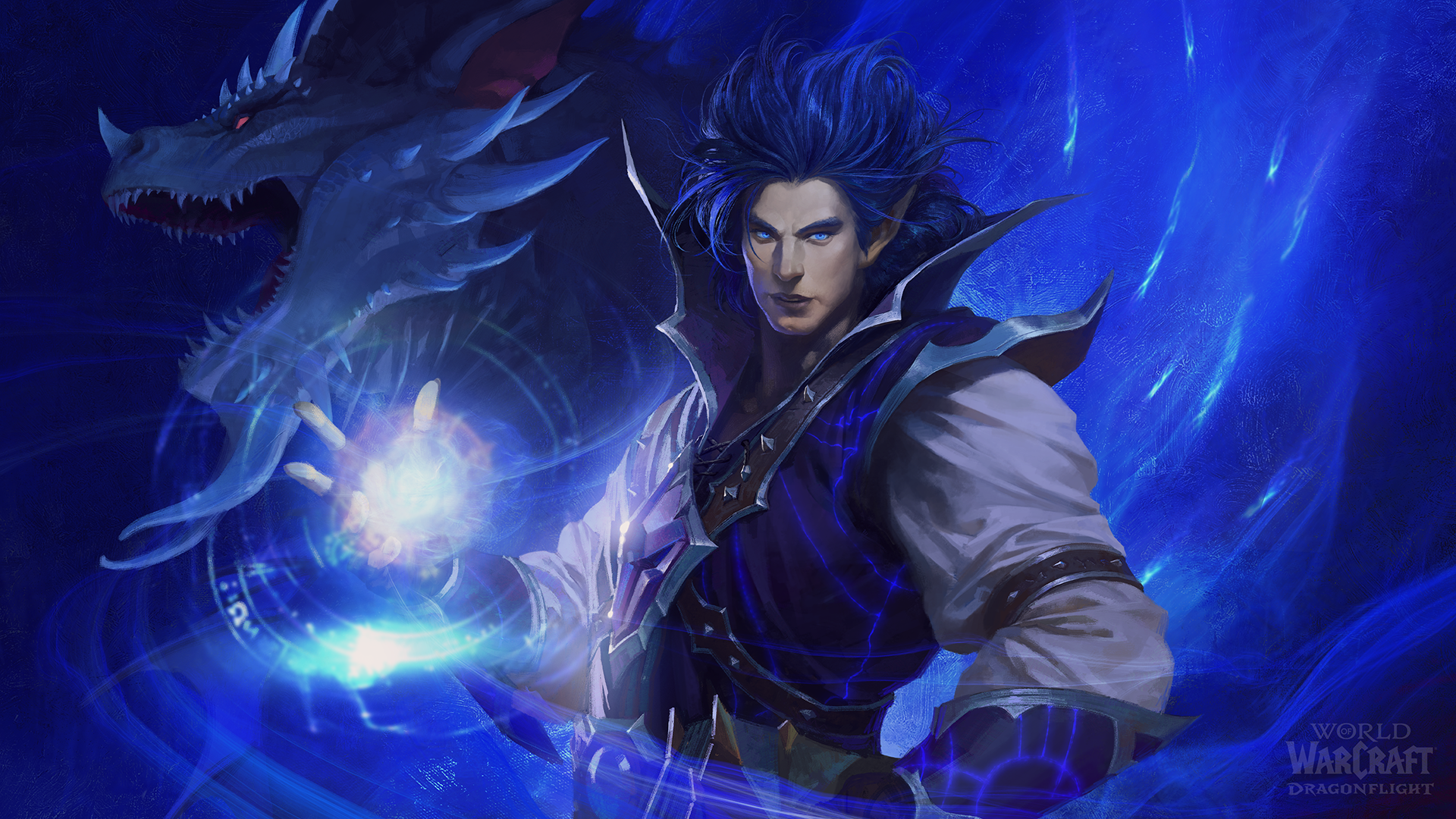
I asked Ion if, in a world with an infinite budget, what one feature he'd like to get implemented. In a previous interview, Ion mentioned his idea of a pet battle auto-battler-type system, and almost every WoW interview tends to bring up player housing in one form or another. Ion emphasized that WoW's developmental pipeline always revolves around making the biggest impact on the game using the resources available, which may mean things like getting patches out more quickly, for example.
"It's a good question, but it's a tricky one. I think the features that I feel most strongly about are things that we have already done. That's part of part of helping to prioritise. If you're truly infinite, without management constraints, then who knows. The reality is we don't we're not looking at what we can or can't do based on a price tag or a budget. It's about the resources we have. If we had 100 more people on the team tomorrow, there would still be the question of what's the highest impact thing those 100 people can do? Is it getting patches out more frequently? Is it having more smaller updates in between our major new zone, new raid tier type patches to keep the world feeling more alive and the story moving forward? IS it pet battle improvements? Is it whatever else?
It's really hard for me to name the one thing I think certainly like there's more we want to do with pet battles, as an example for sure. There's more we want to do with transmog. There's more we want to do with like lots of systems. Improvements to the UI, clarity around how quest presentation works. The way we put quest text in a box and ask you to read it is something that was great 20 years ago — we can do a lot better today. It's just a question of like, when are we going to pull the trigger on those things? And there is a list miles and miles long of things we'd love to do. It's guided by the feedback that we hear from all sources."
Another interviewer asked Jeremy Feasel how player identity is evolving in general as we head into Dragonflight. After all, we do now have class-specific sets returning, but there are also unique unlocks for Dragonriding mechanics and beyond.
"The refocus on class design sets on the raid side of things, I think has been interesting. Similarly on the professional side of things, we really wanted to make you feel like you were that profession. When you are doing that profession's activities, you should be decked out in a cool helmet and a mining pick. You should feel like you're a member of that profession.
The focus on this being an exploration-based expansion pack allows players to really carve out a unique identity for themselves. Do you want to go off and do Centaur hunts? Do you want to collect Tuskarr pieces? There are weekly bonuses for activities wrapped around all of these things, allows you to do really any of these things. You could gun to be the guy that unlocked the otter mount first, or the person who unlocked this unique dragonriding skin first, and so on."
Thanks to Blizzard for joining us!
A big thank you to Blizzard and the other interviewers for this large Q&A session. You can jump into World of Warcraft: Dragonflight right now and play the Dracthyr Evoker class early with a pre-purchase, ahead of the game's full-blown launch on November 23.
World of Warcraft is one of Blizzard's crowning achievements, revitalizing the MMO genre and becoming one of the most influential games of all time. The hyper-optimized game runs on virtually any of the best gaming laptops and even the most affordable gaming laptops, supporting lower-end PCs all the way up to ultra-graphics that now even include ray-traced shadows and other modern graphics profiles.
World of Warcraft: Dragonflight has a real chance to put the aging MMO back on the map after a couple of relatively disappointing expansion outings.
World of Warcraft: Dragonflight $50 at Blizzard
A new class, a massive new continent, a new endgame, new professions systems, new UI, and new talent systems, World of Warcraft: Dragonflight is a massive overhaul for the aging MMO.
Shadowlands will probably be remembered as one of the game's least popular expansions, with irritating time-gating and perplexing story directions that betrayed decades-old lore with character decisions that made little sense on the surface. Dragonflight features something of a time skip, moving the plot forward several years to deliver something fresh in the process. A return to classic Azerothian territory with a deeper emphasis on the game's core systems should prove to be a hit with lapsed fans and existing players alike, but only time will tell if it all pans out as planned.

Jez Corden is the Executive Editor at Windows Central, focusing primarily on all things Xbox and gaming. Jez is known for breaking exclusive news and analysis as relates to the Microsoft ecosystem while being powered by tea. Follow on Twitter (X) and tune in to the XB2 Podcast, all about, you guessed it, Xbox!

